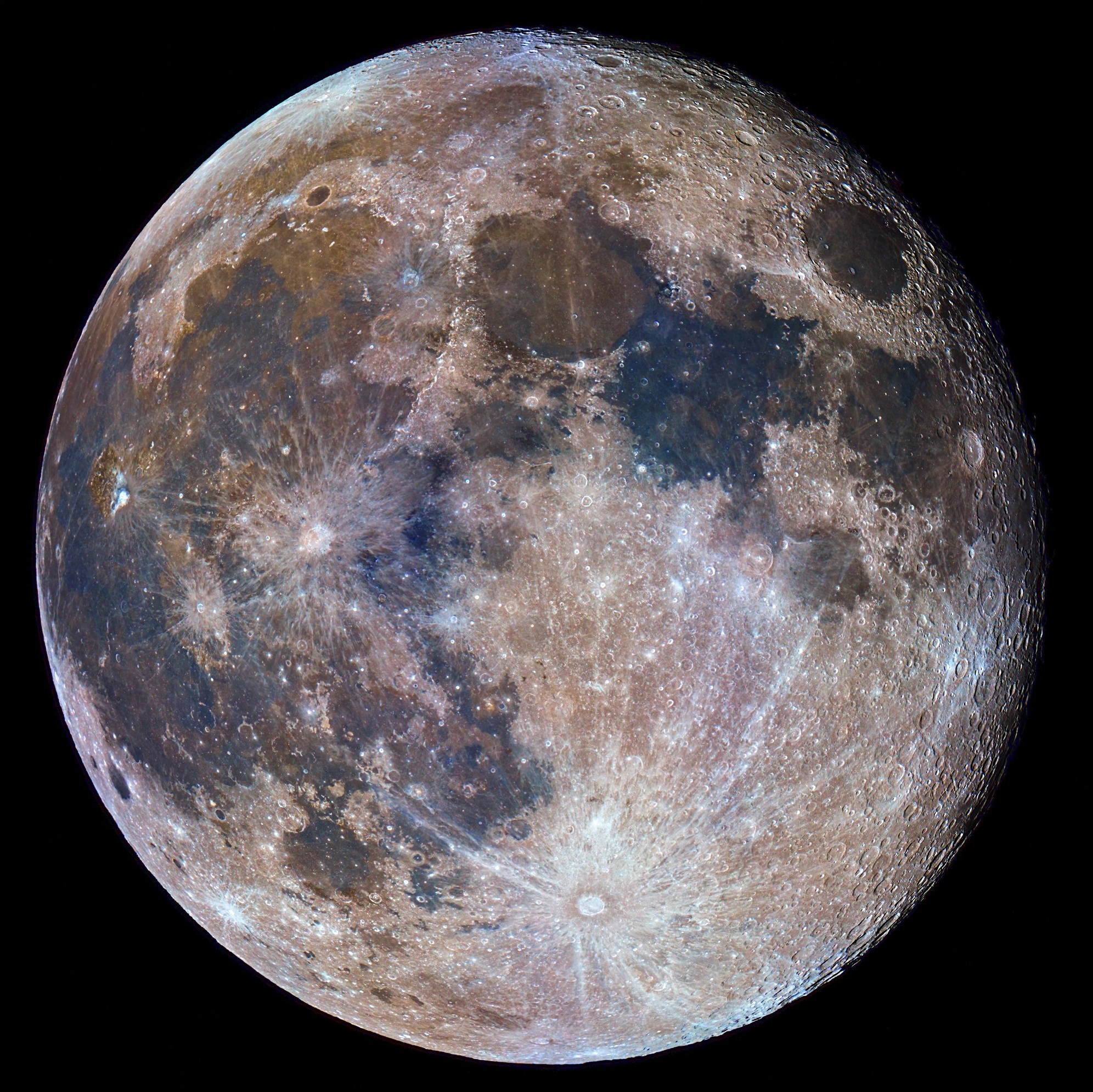A software engineer from Florida recently captured an image of the day-old supermoon in September that clearly conveys color variations across its surface. Such variations are often imperceptible, but the brightness and color differences were digitally enhanced to make them easier to discern. The color variations are indicative of compositional differences across the Lunar surface (e.g., iron content and impact ejecta).
A supermoon is a full Moon that is observed during the satellite’s closest approach to Earth. The Moon’s orbit is described by a marginally elongated ellipse rather than a circle, and hence the Moon’s distance from Earth is not constant. The Moon will achieve its largest apparent diameter in the Sky during that closest approach, which in part gives rise to the supermoon designation.
Noel Carboni, who imaged the supermoon a day after the full phase, told Universe Today that he, “created the image using 17 frames shot with a Canon EOS-40D, which was mounted to a 10-inch Meade telescope.” He added that, “each exposure was 1/40th of a second, and a workstation was used to stitch the image which is more than 17,000 pixels square.”
Carboni noted that, “Ever since the 1980s, I have harbored a growing interest in digital imaging. It is exciting that nowadays affordable and high quality image capture equipment are available to consumers, and that formidable digital image processing tools are available to just plain folks!”
His astrophotography may be well known to readers of Universe Today, as his work has been featured on NASA’s Astronomy Picture of the Day (APOD) and elsewhere. A gallery of Carboni’s astrophotography can be viewed at his webpage.
Readers desiring to learn more about the Moon and its surface can join the Moon Zoo Citizen Science Project, and glance at images from NASA’s Lunar Reconnaissance Orbiter. The Moon Zoo project aims to inspect millions of images captured by that instrument, which will invariably help scientists advance our understanding of the Moon.

